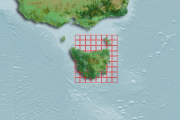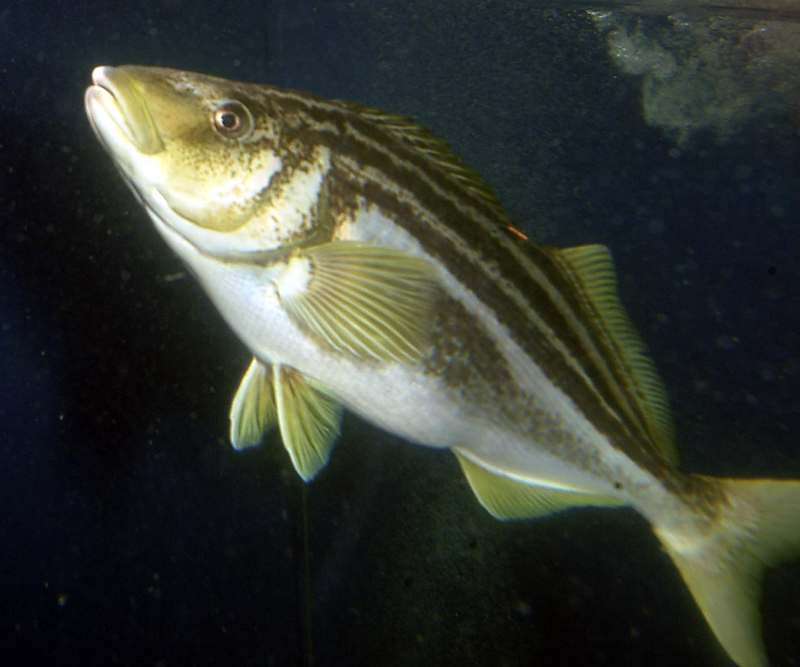Oceans | Marine Biology | Fish
Type of resources
Topics
Keywords
Contact for the resource
Provided by
Years
-
Between January and March 2003, 25 (15 females, 9 males, 1 no sex recorded) draughtboard sharks, sourced from the Crayfish Point Reserve and the east coast of Tasmania (42-43°S, 147-148°E), were fitted with the acoustic transmitters to investigate movement behaviour.
-

Adult reproductive data for redbait is based on collections taken by midwater trawling during the spawning season and includes the biological information - size, sex, reproductive condition (weight and stage). Histological examination of mature ovaries provides information on spawing activity and preserved gonads are examined to determine batch fecundity.
-

This data represents research conducted as part of a PhD project on Striped Trumpeter (Latris lineata). Recorded the prevalence of Kudoa neurophila (a myxozoan parasite formerly known as Pentacapsula neurophila) in relation to age for hatchery reared Striped Trumpeter using histology and PCR testing. Histology and in situ hybridisation techniques were incorporated into the study of the histopathology of the disease caused by this parasite to elucidate its entry point on the fish host and migratory pathway to terminal stage sporulation.
-
The data is quantitative abundance of fish and megafaunal invertebrates and algal % cover derived from transect based counts at a wide range of locations across Temperate Australia. The methods are described in detail in Edgar and Barrett (1997). Primarily the data are derived from transects at 5 m depth and/or 10 m depth at each site surveyed. Methods were initially developed for research on temporal changes following protection in Tasmanian MPAs (Maria Is, Tinderbox, Ninepin Point, Governor Island). Further research has collected data in Tasmania, in MPA planning surveys (e.g. St Helens, Waterhouse Region, Low Head, Lillico Beach, Rocky Cape), an oil spill assessment (Low Head), and in studies and surveys in new Tasmania MPAs (Port Davey and the Kent Group). The data represented by this record was collected in MPA planning surveys and for opportunistic surveys such as the Low Head oil spill assessment. In many cases the dataset involved temporal replication (year scale).
-
Between January 2000 and January 2007, sharks were tagged during routine fishery dependent and independent rock lobster catch sampling trips around southwestern and eastern Tasmania and in the Crayfish Point Reserve. For each shark, sex, total length and clasper length (males) were recorded.
-
In Tasmania, SCUBA surveys of seahorses populations were conducted. Intensive surveys were conducted in 2000 to 2004 in the Derwent River around Hobart (submonthly & then monthly) and twice yearly surveys from 2004/5 on east coast and Derwent River, until 2007. Mark-recapture studies were done to estimate population size, and life history parameters.
-
Database contains information on eggs and larvae of redbait (Emmelichthys nitidus) collected during surveys conducted around eastern to south-western Tasmania in October 2005 and 2006. The database also contains details of each sampled station (e.g. depth, Lat, Long, sampling time) as well as information on the volume of water sampled by each net which is needed to estimate relative abundance of eggs and larvae (numbers per metre square). A separate database contains all data of physical variables recorded by depth simultaneously with each sample, including temperature and salinity.
-
Sampling of commercial mid-water trawl catches for small pelagics from waters adjacent to Tasmania have yielded an extensive biological dataset in space and time. As a minimum, size composition information is available from most commerical shots undertaken between 2002 and 2006, referenced with operational information (location, depth and catch weight). Subsamples of the key small pelagics, redbait, jack mackerel and blue mackerel, were examined for size, sex, gonad weight and stage and otoliths have been retained for age determination. Further data has been collected since the initial investigation.
-
A single database has been implemented to store catch sampling and targeted research data collected since the late 1990s. In addition, data for key species e.g. striped and bastard trumpeter, has been uploaded from historic data bases to provide a complete dataset for the key species. Commercial catch sampling plus opportunistic collections of key scalefish species provide size and age structure information for catches. Where feasible additional biological information e.g. sex and reproductive status is collected.
-
Landings surveys of bycatch of Solegnathus assessed from interviews with fishers in important fishing ports of NSW and Victoria, ranging from the Brunswick-Byron co-op to Portland in Victoria.
 IMAS Metadata Catalogue
IMAS Metadata Catalogue